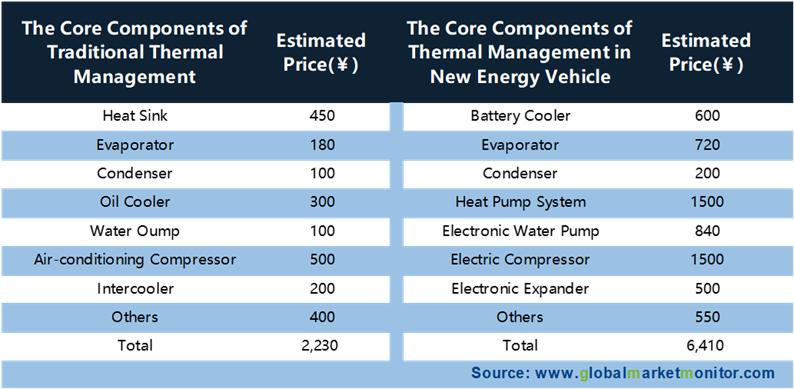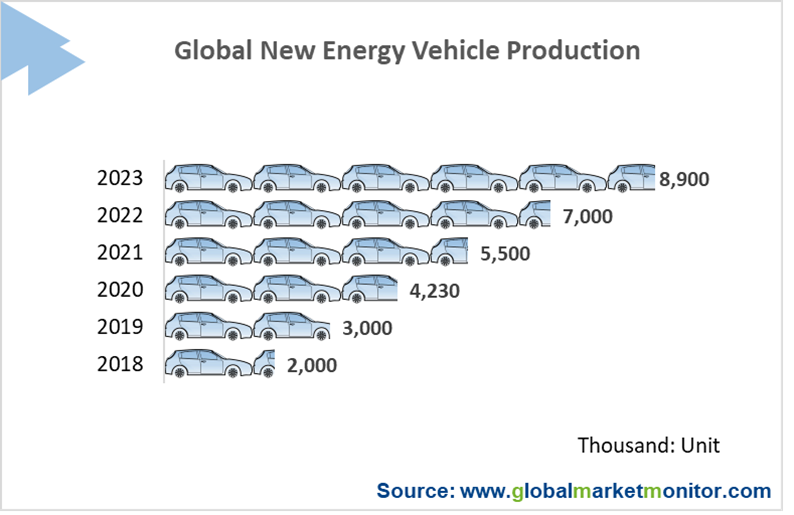The Pattern of Thermal Management System Has Changed with the Reopened Field of Battery Thermal Management
With the active promotion of the new energy vehicles policies and the clipping layout in this field by enterprises around the world, it is an inevitable trend of car electrification. So far, the acceptance to the new energy vehicles of the public which also keep a higher exception to them has raised. But there have been fire accidents of the new energy vehicles, which weakens the trust to new energy vehicles for people who are the potential consumers and has an unfavorable effect on the long-term development of the new energy vehicles.
Get Your Custom Report Immediately:
https://www.globalmarketmonitor.com/request.php?type=3&rid=413868
On May 13th, the Ministry of Industry and Information Technology issued three expedited documents, including a mandatory provision that the battery system would not fire or explode within 5 minutes.
The critical 5 minutes related to life and the elimination of people's concerns all depend on a key component system-thermal management. Thermal management is the regulation of vehicle temperature, which can adjust the working temperature of various parts of the car according to the driving environment of the car so that each device can maintain the optimal operating temperature.
Thermal Management in New Energy Vehicle Adds Multiple Cooling Needs
In traditional fuel vehicles, thermal management includes the thermal management of air-conditioning systems and the cooling of other heat-generating equipment such as engines, where the technologies and products have matured, and the market structure is also quite stable.
Compared with traditional cars, new energy vehicles have higher requirements for thermal management. Not only the air-conditioning system, but also the newly added components such as batteries and drive motors have cooling requirements. The core functions of the thermal management system in the new energy vehicles are focused on the air conditioning system and battery thermal management.
The air-conditioning system is one of the indispensable configurations for people in summer. At present, new energy vehicles focus on using scroll-type electric compressors for cooling. In winter, unlike fuel cars, which can be heated by the engine's heat, new energy vehicles need to use PTC for heating.
The two problems to be solved by the new energy power battery indicate that the high temperature is easy to spontaneous combustion and the endurance in low temperature is affected. The key to solving these two problems is the performance of the battery thermal management system whose core is whether the battery thermal management can ensure the power battery operate stably in the efficient working range of 20°C-35°C.
At present, battery thermal management is divided into three technologies, including air cooling, liquid cooling, and phase-change material cooling. Depending on the configuration of the new energy vehicle, the technology path has its own choices.
Despite the poor heat dissipation effect, air cooling is the choice of nearly half of new energy vehicles; liquid cooling with good heat dissipation effect has high requirements for cost and technology, which is expected to be the main trend in the future. And distorted materials are still in the research and development stage.
Thermal Management System in New Energy Vehicle Has A Higher Value

New Energy Vehicles Provide Increments for Thermal Management Systems
Globally, as decarbonization and electrification of new energy vehicles will become a comprehensive consensus, major car companies are also releasing new energy vehicle development strategies, which will drive the future production and sales of new energy vehicles It is estimated that by 2020, the global output of new energy vehicles will reach 4.23 million.

In 2019, the penetration rate of global electric vehicles was only 1.7%, while the penetration rate in China is 5%. What is estimated is that by 2020, electric vehicle sales in China will exceed 2 million units, with the penetration rate of 6.67%, whose prospects for new energy vehicles are broad in the future.

Thermal management in the new energy vehicle is an incremental market that grows with the increase of new energy vehicles. According to the value of 6410 yuan for heat treatment products of new energy vehicles, it is estimated that the market scale of thermal management in the new energy vehicles will reach 12.8 billion yuan in 2020, which will soar to 41.8 billion yuan in 2025.
The Pattern of Battery Thermal Management Is Re-Arranged, Offering an Excellent Chance To Achieve Overtaking in Corners for Domestic Enterprises
In the field of traditional automotive thermal management, the four major giants in the industry remain high, namely Denso, Valeo, and Mahle, and Hanon, with a total share of 54% of the global automotive thermal management market.
The giants have been cultivating in this field for many years and have accumulated very rich technical experience. In the new energy tide, the air-conditioning system can be updated on the original technical plan because of less technical updates, and smoothly shift its advantages. In the field of battery thermal management, the industry is completely new, and no one can set up technical barriers out of thin air. Leading manufacturers also start from scratch. For new component manufacturers, there is no longer any restraint. The giants have been cultivating in this field for many years and have accumulated very rich technical experience. In the new energy tide, the air-conditioning system can be updated on the original technical plan because of less technical updates, and smoothly shift its advantages. In the field of battery thermal management, the industry is completely new, and no one can set up technical barriers out of thin air. Leading manufacturers also start from scratch. For new component manufacturers, there is no longer any restraint.
The giants have been cultivating in this field for many years and have accumulated very rich technical experience. In the new energy tide, the air-conditioning system can be updated on the original technical plan because of less technical updates, smoothly shift its advantages. But in the field of battery thermal management, the industry is completely new with no leading manufacturers. For new component manufacturers, there is no longer any restraint.
Compared with overseas leaders, domestic manufacturers are based on the domestic market, which has the possibility of overtaking in the corner.
Thermal management system in new energy vehicles of Yinlun Machinery entered Tesla and will be released in 2021. On March 16, the company announced that it has obtained the support of Tesla's automotive heat exchange module products from North America's major customer, mainly supplying its Model Y model in Shanghai plant.
Sanhua Intelligent Control has many signature products such as electronic expansion valves, globe valves, four-way valves, all of which the market shares rank first in the world. With these core products, it has become a supplier of domestic Tesla, which has huge growth space.
LEARN MORE:
New Energy Vehicle
https://www.globalmarketmonitor.com/reports/413868-new-energy-vehicle-market-report.html
Custom Reporting
https://www.chinamarketmonitor.com/request.php?type=9&rid=0


